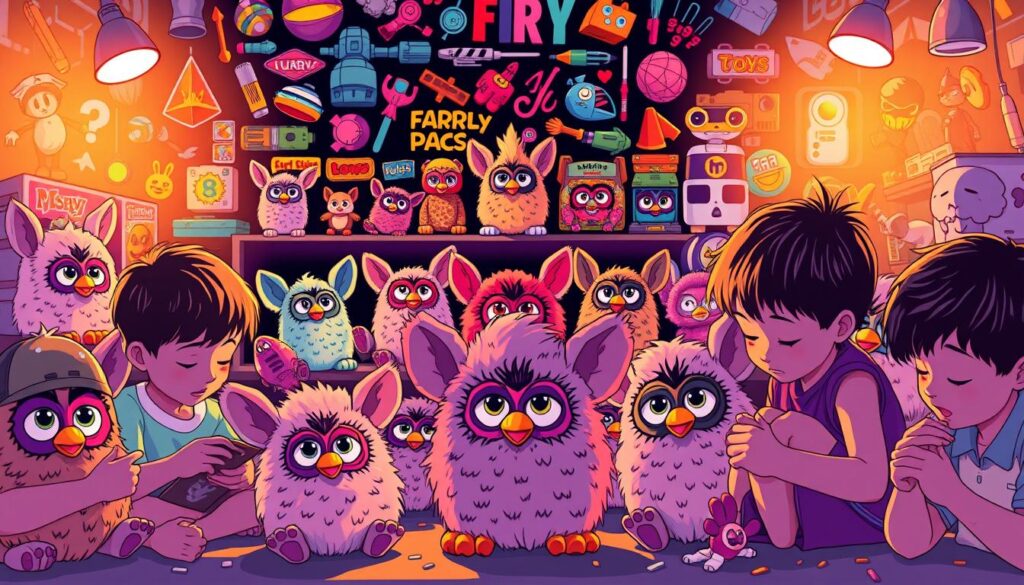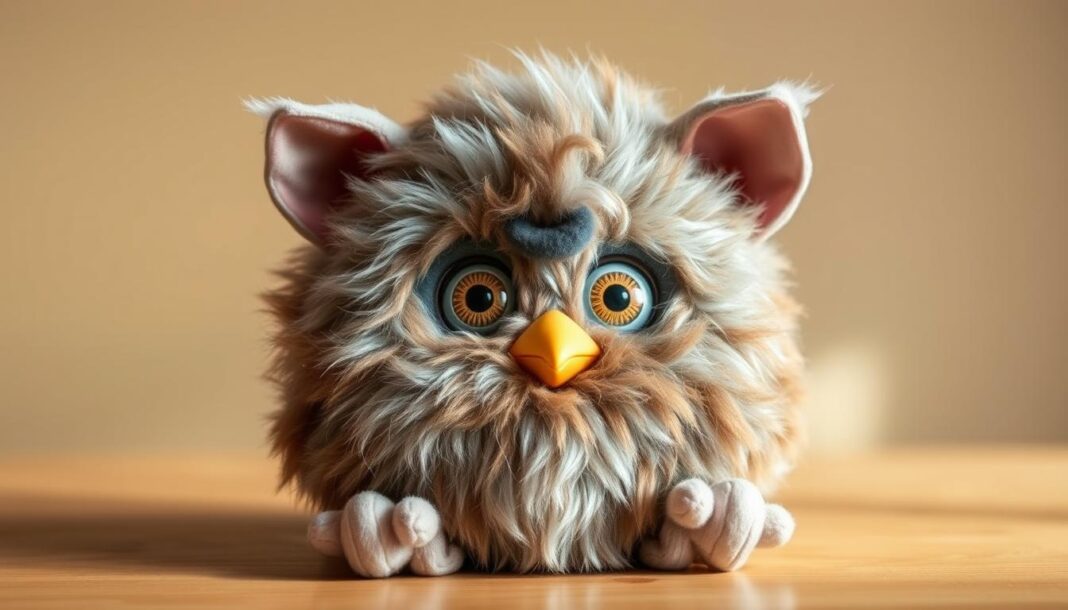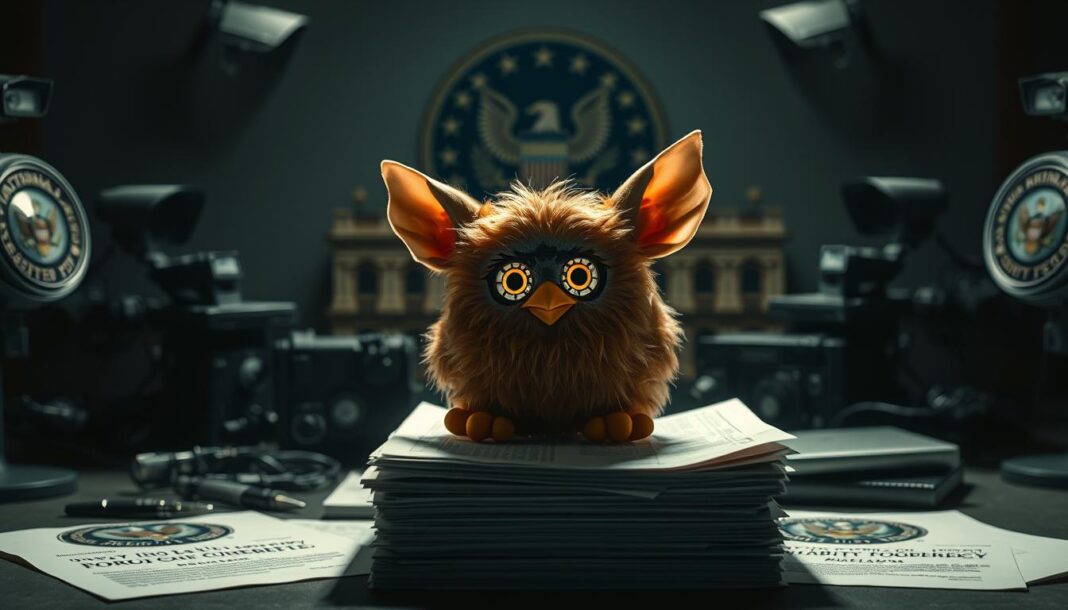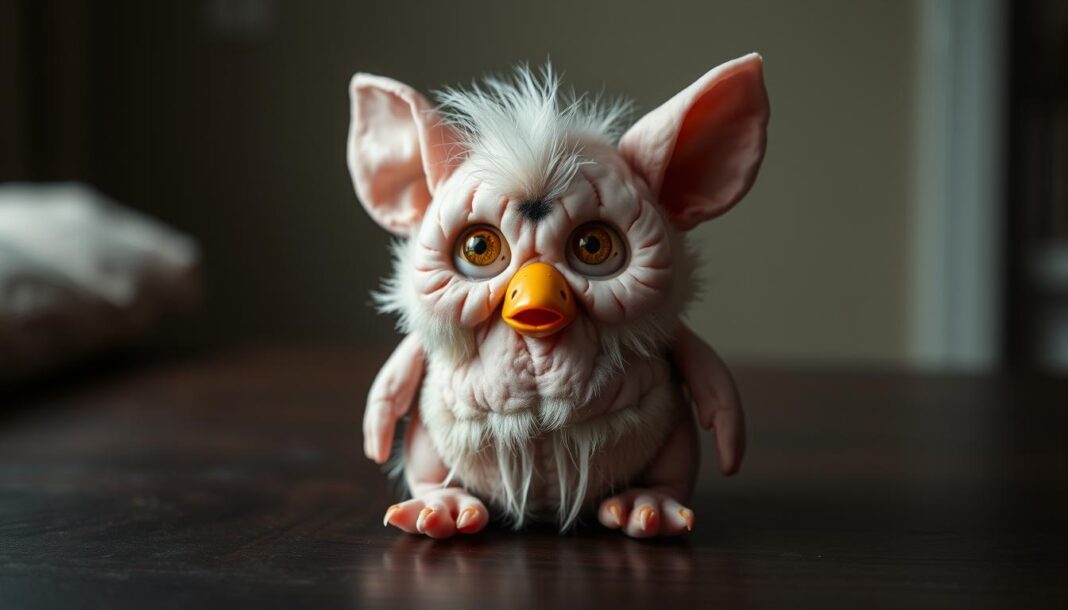Remember the toy that took the world by storm in the late 90s? The one that could talk, learn, and even respond to touch? That’s right—we’re talking about the iconic interactive toy that became a household name. With over 40 million units sold in just three years, it wasn’t just a toy; it was a cultural phenomenon.
What made this toy so special? For starters, it featured a unique 42-word Furbish vocabulary that gradually adapted to English as it interacted with its owner. It also used light and touch sensors, along with infrared communication, making it one of the most advanced toys of its time. With 48 standard colors and 22 special editions, it quickly became a collectible favorite.
Whether you’re a nostalgic fan or a curious newcomer, the story of this toy is a fascinating journey through innovation and creativity. Ready to dive deeper? Explore more about its legacy here.
The Birth of a Cultural Icon: The Original Furby 1998
The story of this iconic toy begins with two innovative minds and a groundbreaking idea. Dave Hampton and Caleb Chung, the creators, spent nine months designing and another nine developing their vision. Their breakthrough? A single motor system that allowed the toy to move, talk, and interact in ways never seen before.
How Dave Hampton and Caleb Chung Created the Furby
Hampton and Chung’s mechatronic innovation was a game-changer. Using just one motor, they designed a toy that could express emotions, respond to touch, and even learn. This unique approach set the stage for what would become a global sensation. Their partnership with Tiger Electronics ensured the toy’s production and release to the masses.
The Launch at the 1998 American International Toy Fair
In February 1998, the toy made its debut at the American International Toy Fair in New York City. Targeting girls aged 5-13, the creators used humor, like a “burping” feature, to captivate the audience. The strategy worked, and the toy quickly became the talk of the event. This marked the first step in its journey to becoming a cultural icon.
Initial Sales and the Holiday Season Craze
When the toy hit stores, it sold out almost immediately. Priced at $35, it became a must-have item, with parents paying over $100 on secondary markets due to shortages. By the end of 1998, production scaled from 1.8 million to 14 million units. Despite being marketed to kids, adult fan clubs began forming, solidifying its place in pop culture.
From toy stores to living rooms, this interactive marvel became a phenomenon. Its release not only redefined playtime but also left a lasting legacy that continues to inspire today.
What Made the Original Furby 1998 So Special?
What set this toy apart was its ability to learn, move, and communicate like never before. It wasn’t just a toy; it was a blend of creativity and technical innovation. Let’s explore the features that made it a standout.
Interactive Features: Sensors, Movement, and Language Learning
This toy was packed with advanced sensors that made it incredibly interactive. It could detect tilts, recognize voice pitches, and even react to light. These features allowed it to respond to its environment in real-time.
With over 300 movement combinations powered by a camshaft system, it could express emotions like happiness, curiosity, and even boredom. Its ability to learn and adapt made it feel almost alive.
The Unique Furbish Language and Its Evolution
One of its most fascinating features was its unique language. Starting with 42 root words, it could form over 200 phrases. As it interacted with its owner, it gradually transitioned from Furbish to English, usually within 24-48 hours.
This unique language system wasn’t just a gimmick; it was a clever way to engage users and make the toy feel more personal.
Technical Innovations for Its Time
This toy was a marvel of technical engineering. It processed data faster than the Apollo 11 guidance computer, a feat that showcased its advanced capabilities. Its single motor system allowed for complex movements and interactions.
Compared to modern toys like Hatchimals, its engineering was groundbreaking. It set a new standard for interactive play, blending emoto-tronic technology with user-friendly design.
| Feature | Details |
|---|---|
| Sensors | Tilt detection, voice pitch recognition, light reactivity |
| Language | 42 root words forming 200+ phrases |
| Processing Power | Faster than Apollo 11 guidance computer |
From its sensors to its unique language, this toy was a masterpiece of innovation. To learn more about its legacy, check out our detailed guide here.
The Original Furby’s Impact on Toy Culture
In the late 90s, a toy emerged that changed the way we played forever. It wasn’t just another gadget; it was a cultural phenomenon that redefined interactive play and left a lasting mark on the world of toys.

How Furby Redefined Interactive Play
Before this toy, most play patterns were passive. Think Tamagotchi, where interaction was limited. This toy introduced a reactive play style. It responded to touch, light, and sound, creating a dynamic experience. Sales charts show it surpassed Tickle Me Elmo by 300%, proving its unmatched appeal.
Its Role in the Rise of Electronic Pets
This toy wasn’t just a hit; it paved the way for electronic pets. Its success inspired a wave of similar products, contributing to the $8.2 billion electronic pet market we see today. It showed that toys could be more than objects—they could be companions.
Collectors’ Obsession with Vintage Furbies
Today, collectors are obsessed with vintage editions. Rare prototypes and limited releases fetch high prices. For example, the Millennium Edition sells for $360 on eBay. Collector communities work hard to preserve these treasures, ensuring their legacy lives on.
| Edition | Secondary Market Value |
|---|---|
| Millennium Edition | $360 |
| Standard Edition | $50-$100 |
| Prototypes | $500+ |
From its fresh new look rereleases to its enduring demand, this toy continues to captivate. Whether you’re a collector or a curious newcomer, its story is one of innovation and nostalgia. Explore more about its legacy in our guide, Buy Furby: Your Ultimate 2023 Shopping.
The Mysterious Furby Ban: Fact Versus Fiction
In 1999, a surprising decision shook the toy world and sparked global debates. Governments, including the NSA and Pentagon, banned one of the most beloved toys over fears of audio surveillance. But was there any truth to these claims, or was it just a case of misplaced paranoia?
Why Governments Banned Furbies in 1999
The ban stemmed from concerns that the toy’s advanced technology could pose a security risk. A declassified NSA memo cited “audio surveillance risks” as the primary reason. With its infrared capabilities and sensors, officials feared it could record sensitive conversations. The FAA even prohibited it on planes, adding to the widespread panic.
However, tests conducted by MIT in 1999 proved these fears unfounded. The toy’s microphone could only detect single tones, not full conversations. Despite this, the ban remained in place, fueled by media speculation and public uncertainty.
Debunking the Myth of Furbies as Spies
The idea of a toy being used for espionage might sound like a plot from a spy movie, but it was far from reality. Hasbro, the manufacturer, clarified that the toy lacked any recording capability. The FBI also released a statement confirming no espionage cases were linked to it.
So, why the uproar? The toy’s ability to mimic human speech and its advanced features led to misunderstandings. Over the years, this myth has persisted, even inspiring memes and urban legends.
Public Reactions and Media Coverage
The ban dominated headlines, with outlets like CBS News showcasing teardowns to prove its innocence. Public reactions were mixed—some found the fears amusing, while others were genuinely concerned. The media frenzy only added to the toy’s mystique, making it even more popular.
In 2023, TikTok trends revived the “haunted Furby” memes, proving its lasting impact on pop culture. From a banned toy to a viral sensation, its story continues to captivate audiences worldwide.
- Declassified NSA memo: Cited “audio surveillance risks” as the reason for the ban.
- MIT tests: Proved no recording capability in 1999.
- FBI statement: Clarified no espionage cases were linked to the toy.
For more insights into this fascinating chapter of toy history, check out our detailed guide on why Furbies were banned.
The Evolution of Furby: From 1998 to Today
Over the years, this interactive toy has evolved into a modern marvel. From its early days as a groundbreaking gadget to its latest iterations, it has consistently pushed the boundaries of play. Let’s take a closer look at its journey through the decades.
Emoto-Tronic Furbies and Their Advancements
In 2005, the Emoto-Tronic line introduced voice recognition, taking interactivity to the next level. This innovation allowed the toy to respond to specific commands, making it feel even more lifelike. With improved sensors and movement capabilities, it became a favorite among tech enthusiasts.
These advancements showcased the toy’s ability to adapt to changing technology. It wasn’t just a toy anymore; it was a glimpse into the future of interactive play.
The 2012 and 2016 Reboots: Furby Boom and Furby Connect
The 2012 Furby Boom brought app integration, allowing users to care for their toy through a smartphone. This feature added a new layer of engagement, blending physical and digital play seamlessly.
In 2016, the Furby Connect took things further with color LCD eyes and enhanced connectivity. It could now interact with other toys in the line, creating a more immersive experience. These reboots proved that the toy could stay relevant in a tech-driven world.
The 2023 Revival: A New Generation of Furbies
The new Furby models released in 2023 feature over 600 reactions, making them the most interactive yet. With a simplified design strategy, they appeal to both nostalgic fans and newcomers. These modern versions continue the legacy of innovation that began decades ago.
From its early days to the latest releases, this toy has remained a symbol of creativity and technological progress. Explore more about its fascinating journey in our guide, Uncovering the Nostalgia and Fun.
| Generation | Key Features |
|---|---|
| 1998 | Single motor system, Furbish language |
| 2005 | Emoto-Tronic voice recognition |
| 2012 | Furby Boom app integration |
| 2016 | Furby Connect color LCD eyes |
| 2023 | 600+ reactions, simplified design |
Furby’s Enduring Popularity in Pop Culture
From art installations to viral TikTok trends, this toy has cemented its place in pop culture. Its influence spans across art, music, and media, proving that it’s more than just a toy—it’s a cultural icon. Let’s explore how it continues to captivate the world and inspire creativity.
Furby in Art, Music, and Media
This toy has inspired countless artists and musicians. In 2001, Björk featured a Furby orchestra in her tour, blending technology with art. Art installations showcasing custom editions have popped up globally, from Berlin’s rave culture to galleries in New York.
In 2018, it even made its way into Transformers comics, further solidifying its place in media. Its unique design and interactive features make it a favorite subject for creative expression.
Nostalgia and the Resurgence of 90s Toys
Gen Z’s fascination with “analog tech” has brought 90s toys back into the spotlight. Platforms like TikTok, with over 714k followers for #LongFurbyFam, showcase this trend. Etsy sellers are capitalizing on the demand, creating custom versions that sell for up to $340.
This resurgence isn’t just about nostalgia; it’s about celebrating the simplicity and charm of a bygone era. The toy’s vibrant colors and quirky personality make it a perfect fit for this trend.
How Furby Continues to Inspire Creativity
From language apps reviving “Furbish” to DIY projects, this toy sparks creativity in unexpected ways. Its ability to adapt and evolve keeps it relevant, even decades after its debut. Whether it’s through art, music, or custom designs, it continues to inspire new generations.
For more on how this toy inspires creativity, check out our guide on The Long Furby Experience.
The Legacy of the Original Furby 1998
The journey of this iconic interactive companion has left an indelible mark on toy history. With over 58 million units sold across generations, it remains a testament to innovation and creativity. Its R&D influence paved the way for modern companion robotics, inspiring countless advancements in the field.
Hasbro engineers often reflect on its design legacy, noting how its single motor system and unique language learning set new standards for interactive toys. Production costs in 1998 were groundbreaking, yet today’s models showcase even more sophisticated technology at a fraction of the price.
Preservation efforts at the MIT Museum highlight its cultural significance, ensuring future generations can appreciate its impact. Collectors continue to value vintage editions, with prices expected to rise as its legacy grows.
As we look to the future, the balance between analog and digital play remains a key theme. This toy’s enduring appeal reminds us of the joy found in simple, interactive experiences. Explore more about its fascinating journey in our comprehensive guide.


